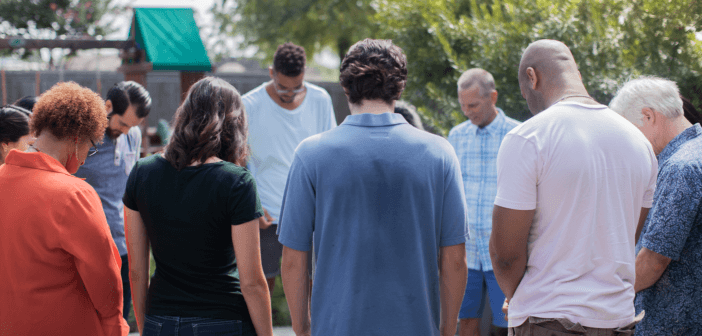Jessica Anschutz of the Lewis Center staff offers tips for planning relaxing, spiritually renewing retreats. Use these seven tips to ensure your next retreat is meaningful for all participants.
Prior to entering the ordination process, I experienced retreats that were relaxing, spiritually renewing, restful, and fun experiences that offered a break from the daily grind. Since then, I have experienced too many “retreats” that were long meetings in disguise. Keep these tips in mind in order to plan meaningful retreats:
1. Engage target participants in the planning process.
Not only will engaging participants in the planning process contribute to creating a meaningful, relevant retreat, it helps participants invest in the retreat even before it begins. If planning a youth retreat, be sure to invite some youth to participate in the planning process. As excitement for the retreat grows, those participants engaged in the planning process can share their enthusiasm to help recruit additional participants.
2. Determine the focus.
Don’t try to cover too much during the retreat. Identify the focus of the retreat and be sure that all of your gatherings, sessions, and activities connect to the identified focus. The narrower the focus, the better. If something does not connect to the identified focus, set it aside for use at a future gathering.
3. Attend to physical comfort.
Select a retreat venue that provides maximum comfort for your retreat participants. Select a venue that is accessible, provides temperature controls, comfortable seating, good food, and beautiful surroundings. Be sure to tend to the dietary needs of retreat participants so that everyone can relax and enjoy their time at the retreat. Incorporate bio breaks with refreshments into the schedule. Participants should know what the schedule entails and be involved in any decisions to modify the schedule during the course of the retreat. Share venue/facility guidelines and COVID-19 protocols with retreat participants in advance.
4. Allow time for rest, play, and creativity
When planning the retreat, incorporate time for rest. This may include a later start time, an extended break during the day, or free time in the afternoon or evening. Consider how you can incorporate play and creativity into the retreat. Are there options for play and creativity during free time and during the planned program? Make arrangements for games, sports activities, arts and crafts, entertainment, hiking, swimming, etc., and allow participants to choose activities that will be restful and enjoyable for them. For example, not all retreat participants will find an evening dance party fun, but for others it may be their favorite part of the retreat.
5. Establish appropriate guidelines around confidentiality.
Creating an environment where people feel as safe as possible sharing and confiding in one another is essential to the retreat experience. Be clear about confidentiality guidelines. You might work with those who are gathered for the retreat to develop a covenant or agreement around guidelines for confidentiality and participation. Participants should be clear about when they are expected to be present and when an activity or program is optional. Be clear about the use of cell phones, computers, and technology during the retreat.
6. Incorporate silence and time for reflection.
All too often our gatherings are filled with words and people talking. Allow time for silence and for participants to reflect on their experience, learnings, and growth. Silence can be incorporated into worship, discussions, free time, meals, and may lead to creative thoughts.
Keep in mind that introverts are more likely to thrive in situations where they are reflecting on their own; extroverts thrive in situations where they are able to share with others. Retreats should offer both opportunities for self-reflection and small group sharing.
7. Make use of a “parking lot.”
Use some chart paper, poster board or a notebook to create a “parking lot” space where participants can record any ideas, thoughts, brainstorms that are not related to the retreat’s focus but are worth capturing or need follow up after the retreat. This will keep your meeting on target while giving extraneous ideas their due.
Following these tips will help lead to meaningful and spiritually renewing retreats. Be creative, have fun, and enjoy quiet time and reflection. If what you are planning is an extended meeting rather than a retreat, then do not call it a retreat.
Related Resources
- 50 Ways to Strengthen Adult Education, a free resource from the Lewis Center
- Tips for Strengthening Adult Education by Ann A. Michel
- Becoming a Spiritual Leader by John R. Schol







